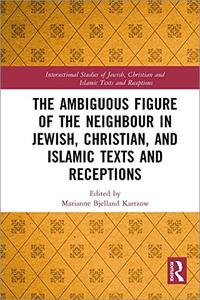
This book examines an undertheorized topic in the study of religion and sacred texts: the figure of the neighbor. By analyzing and comparing this figure in Jewish, Christian and Islamic texts and receptions, the chapters explore a conceptual shift from “Children of Abraham” to “Ambiguous Neighbors.”
Through a variety of case studies using diverse methods and material, chapters explore the neighbor in these neighboring texts and traditions. The figure of the neighbor seems like an innocent topic at the surface. It is an everyday phenomenon, that everyone have knowledge about and experiences with. Still, analytically, it has a rich and innovative potential. Recent interdisciplinary research employs this figure to address issues of cultural diversity, gender, migration, ethnic relationships, war and peace, environmental challenges and urbanization. The neighbor represents the borderline between insider and outsider, friend and enemy, us and them. This ambiguous status makes the neighbor particularly interesting as an entry point into issues of cultural complexity, self-definition and identity. This volume brings all the intersections of religion, ethnicity, gender, and socio-cultural diversity into the same neighborhood, paying attention to sacred texts, receptions and contemporary communities.
The Ambiguous Figure of the Neighbor in Jewish, Christian, and Islamic Texts and Receptions offers a fascinating study of the intersections between Jewish, Christian and Islamic text, and will be of interest to anyone working on these traditions.
DOWNLOAD LINK